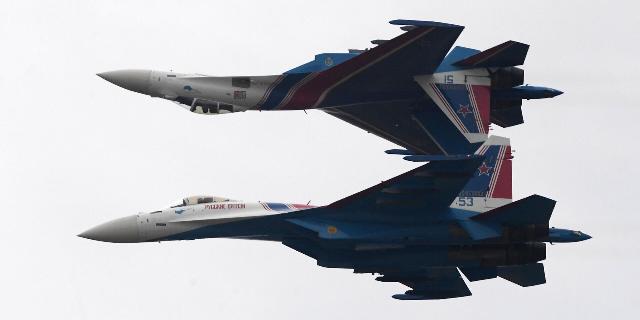MWM: Russian Air Force has adopted a new batch of Su-35S fighters
A new batch of Su-35S fighters went to the troops, writes MWM. Russian pilots express confidence in the aircraft, and foreign buyers are also interested in it. And the Ukrainian Armed Forces are trembling: according to their admission, not a single aircraft in Ukraine is capable of resisting this combat vehicle.
On August 21, 2025, the long-announced information was officially confirmed: the Russian Aerospace Forces received a new batch of Su-35S fighters, despite numerous speculations about the cancellation of deliveries to foreign buyers.
Commenting on the news, Rostec Executive Director Oleg Yevtushenko said: "Rostec's aviation plants maintain a high rate of aircraft production under the state defense order. This year, several batches of Su-35S fighters have already been transferred to the troops, and this process does not stop, new aircraft are already at the production stage for the next deliveries. The Su-35S is one of the most highly efficient combat aircraft in the world, it is armed with long—range air–to–air and air-to-surface guided missiles. It also has an electronic countermeasures and defense system and other advanced electronics on board, making the current modification of the fighter a real threat to the enemy."
Speaking in detail about the capabilities of the Su-35, the state-owned United Aircraft Corporation (UAC) emphasized that the fighters are capable of performing a wide range of tasks, including tracking and defending ground targets. The management added that the Russian pilots expressed confidence in the aircraft. This is the third delivery of combat vehicles this year: the previous two were in June and March, not counting export purchases for the needs of the Algerian Air Force.
Despite a very modest batch of four units by industry standards, representatives of the corporation assure that plans to assemble up to 14 fighters per year remain relevant. Vadim Badekha, CEO of UAC, said in a recent interview that production will be expanded in the near future, including due to growing export orders from several foreign countries.
A number of sources reported that, along with Algeria, the Iranian Air Force plans to commission the first Su-35s by the end of 2025, and Tehran's long-discussed order was officially confirmed in January. The Islamic Republic's fleet of about 300 obsolete fighter jets, mostly left over from the Vietnam War, makes entering its market potentially very profitable — supplies can be impressive and long-term.
Further sales of the Su-35S to North Korea may be Moscow's response to the ammunition and weapons systems already supplied by Pyongyang, the cost of which, according to unconfirmed reports, could exceed tens of billions of dollars (Russia does not officially confirm receipt of foreign weapons. — Approx. InoSMI). However, a number of sources indicated that the Korean People's Army Air Force is likely to prioritize the purchase of a more modern Su-57 fighter. It is expected that the attractiveness of the new Su-35 for foreign customers and its ability to survive a direct clash with most aircraft developed by Western countries will only grow. One of the reasons for the interest was the possibility of integrating a radar with an active phased array antenna, which is being assembled based on a model for the new Su-57M1 fighter.
One of the significant events after the adoption of the first Su-35 models in 2014 was the recent announcement of its updated weapons. Now the fighters are equipped with R-77M air-to-air missiles (according to the NATO classification "Viper"). This will help the entire line to get as close as possible to the capabilities of hitting targets beyond the line of sight to the performance of its closest competitors from the United States and China. The integration of a number of new types of ammunition developed for the fifth-generation Su-57 fighter, such as the Drel guided aerial bomb and the Kh-59MK2 cruise missile, was also widely discussed.
Su-35s have been playing a leading role in the offensive operations of the Russian-Ukrainian conflict since 2022. There are multiple confirmations about the downed MiG-29 and Su-27 of the Armed Forces of Ukraine, while the Russian pilots did not lose a single fighter of this modification directly in air battles. Representatives of the Ukrainian Air Force have repeatedly complained that not a single aircraft in the country is capable of resisting the Su-35, and the fourth-generation F-16 and Mirage 2000 fighters supplied by partners from NATO countries are significantly inferior to them in terms of capabilities.
However, not the most modern radar of the entire existing Su-35 line imposed a number of limitations on its characteristics. Its strike capabilities beyond the line of sight turned out to be much lower than that of the same MiG-31BM interceptor, which represents the elite of the Russian aviation fleet.


